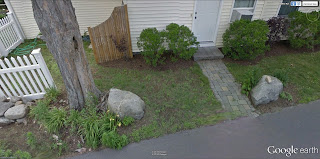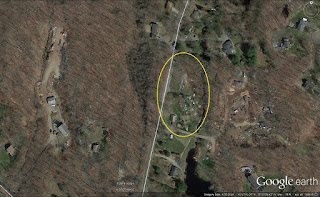These are photos taken October 20-21, 2014 at the Norbeck
Section 2 prescribed fire being managed on State, Federal and private lands
approximately 4 miles northeast of Pringle, South Dakota.
Imagine instead of wire fence and a mowed path,
a “stone fence" in New England.”
Imagine instead of a stone fence,
a long snake-like geoglyph or a Petroform Great Serpent at the Eastern Gate of
Turtle Island...
The Guarding
Great Stone Serpents, who know your intentions, who have been offered tobacco,
that enclose a place have been repaired. The firewood has taken away to the
enclosure where the wigwams are, and now the Ceremony continues as fires are being
set along those Guarding Serpents, burning toward the center...
Imagine a quarter
or perhaps half a million miles of rows of stones, stacked like snakes,
connecting yet separating Places on a Sacred Stone Landscape, , snake heads up
on the High Places, tails in the watery entrances to the Places where the Great
Serpents live and travel along.
And the whole
Stone Garden is dotted with stone mound monuments of many kinds, somewhat
similar yet each as individual as a snowflake...
Remember: these fires
are beneficial low ground fires, not destructive crown fires that consume all.
Note the trees
still standing above the blackened ground...
The Tribal Perspective of Old Growth in Frequent-fire
Forests—Its History
Victoria
Yazzie 1,2
“Native Americans used fire for hundreds to
thousands of years to manage forests and construct old-growth structure
before European settlement (Cronon 1983, Delcourt and Delcourt 1997, Anderson
2005). Details of these practices can be generalized from historic records and
reconstructions of habitat characteristics before European contact. Although
the intent to uncover history validates historic habitat structure, the
evidence of Native American influence is minimized or lost through
misinterpretation by non-Indian perceptions of American Indian history (Wilson
1996) and the effects of traditional ecological knowledge (TEK) use (Simpson
2004). Native American people have long had an immediate relationship with
their physical environment and were cognizant of its rhythms and resources.
Their management of natural resources and the altering of landscapes with fire
are grounded in generations of accumulated wisdom and a reciprocal obligation
with all animals and inanimate beings (TEK; Simpson 2004)...
Colonization in New England began at a time
when the ecological conditions of extensive regions of North America depended
on prescribed fire use by Native Americans. The ecology of these landscapes
began to be changed by European settlers who altered the uses of the land, and
by the forced decline of the Native American people and their use of ecological
knowledge (Cronon 1983, Stewart 2002). Changing patterns of native resources
use by European invasion altered the physical and cultural landscape in this “New
World.”
To the Europeans,
the overall resource abundance of the New World—as evidenced by the old-growth
forests, large herds of animals, large flocks of birds—seemed infinite. The fur
trade and lumber industries opened the door to resource exploitation...
One can postulate that a similarity exists
between the reduction of old-growth forests and the decline of Native American
populations, which have been forced to assimilate, and the outlawing of their
TEK practices, such as the use of fire... Indeed, tribal communities have been preserved for centuries because of
their knowledge of the natural, spiritual, and ecological world, and their
understanding and respect for the interconnectedness between humans and all
other living things (Moller et al. 2004).
Combining Science and Traditional Ecological Knowledge:
Monitoring Populations for Co-Management
Henrik Moller1, Fikret Berkes2, Philip O'Brian Lyver1, and
Mina Kislalioglu2






















































